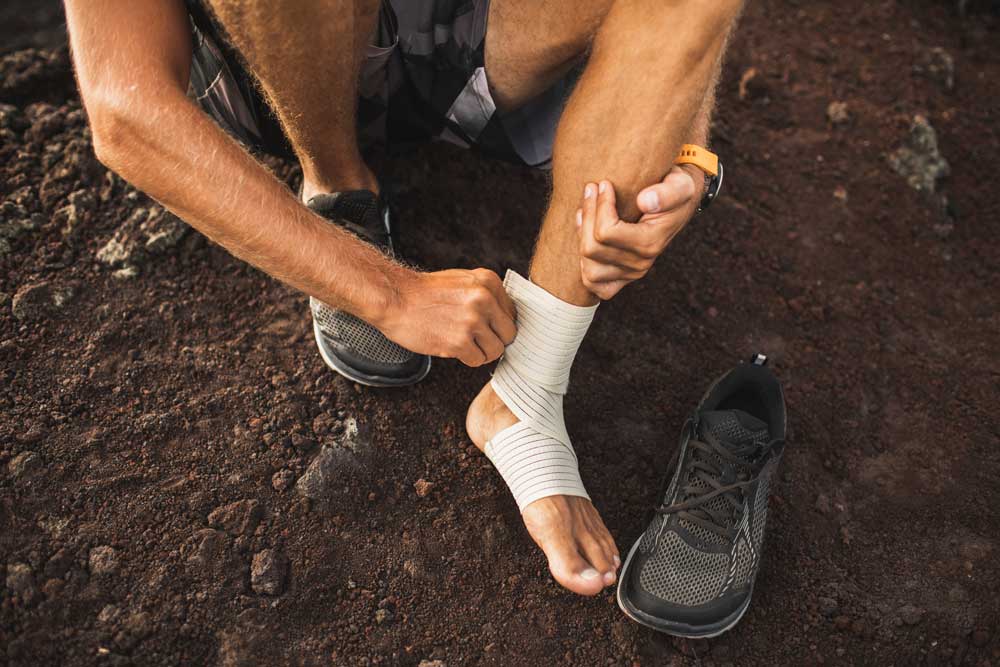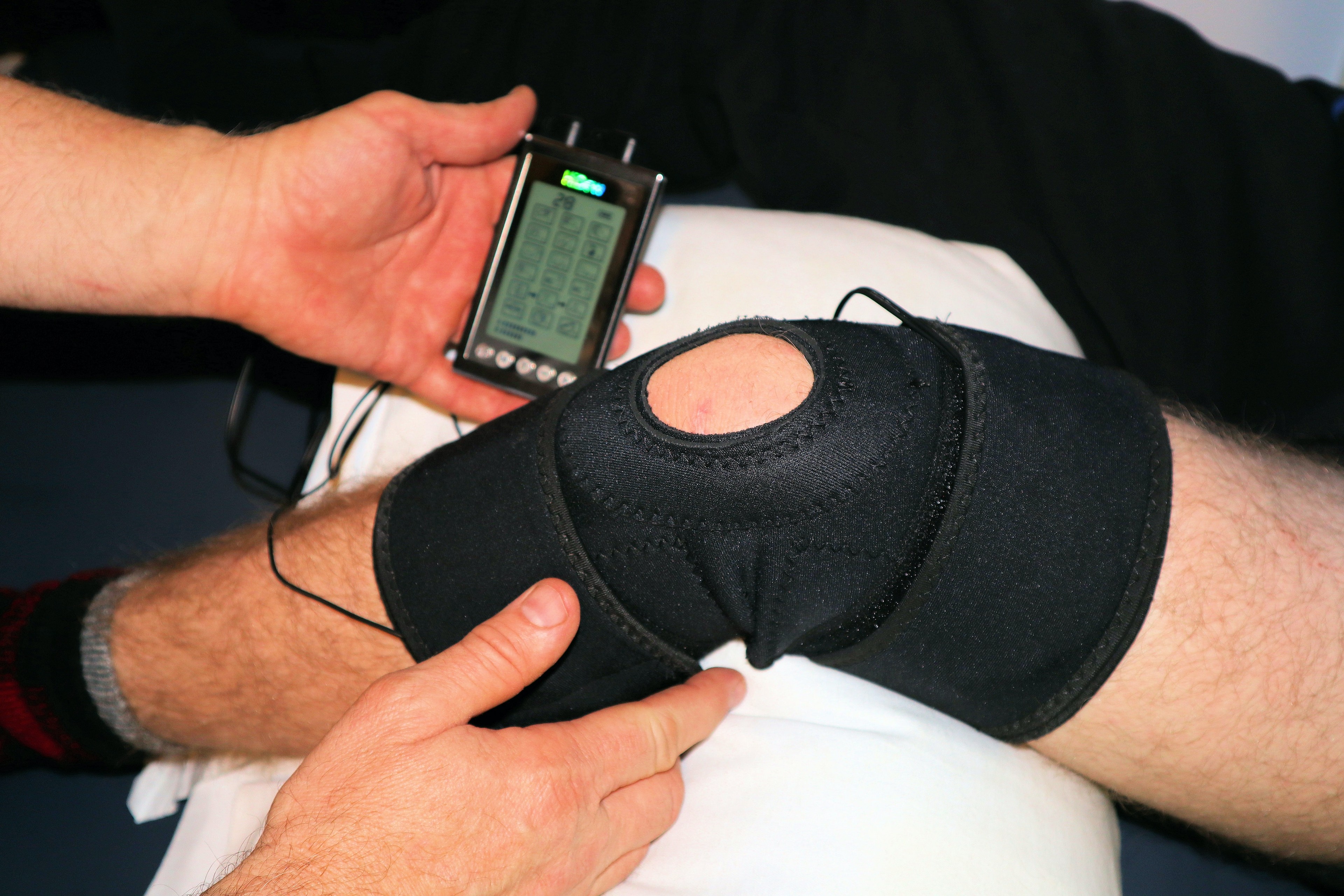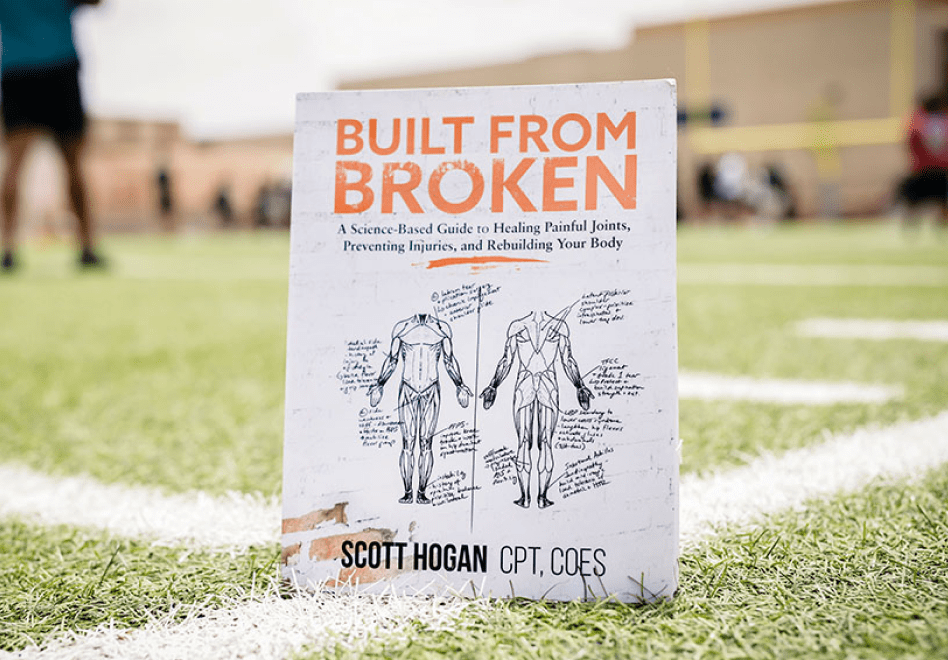
Be built (to last).
The right supplements can help you recover naturally and build a resilient body.

Supplement Quiz
Take this short quiz to discover the perfect supplements for your needs and goals.
About SaltWrap

Built from Broken
Get the best-selling book from SaltWrap founder, Scott Hogan, and start rebuilding today.
3 Steps To Recover From Nagging Injuries

By Chris Dempers, ASCM-EP®, MES
Nagging injuries are one of the most frustrating problems athletes and active people face. A bad shoulder. A bum knee. A low back that’s prone to “going out.”
If you’ve experienced any of these for yourself, you know exactly what I’m talking about.
But if you haven’t? Let me bring you up to speed…
They’re annoying. They’re painful. But more importantly, they can keep you from reaching your fitness goals and unlocking your full potential. Not just physically, either. If you’re always working around nagging injuries — or trying to avoid reaggravating them during a quiet period — it’s easy to take your eyes off the prize.
This can lead to further setbacks, including additional injuries.
Not to worry. In this article, I’ll detail three steps to take to recover from nagging injuries. And I don’t mean just pushing through them, either. (That often does more harm than good.)
By the time you’re done reading, you’ll have not just a new outlook on nagging injuries, but a blueprint for finally fixing them.
But before we get to that, you need to know a little bit about my journey with nagging injuries.

How Injuries Shaped My Path
I’ve played sports most of my life. Like most lifelong athletes, I’m no stranger to setbacks. And I’ve faced the usual suspects of sports injuries: knee, shoulder, and back.
I’ve had surgery on both knees and my right shoulder. Twice.
The procedures were successful on paper. I didn’t have the same amount of pain and discomfort afterward. Things that were out of place or otherwise obliterated are where they belong now.
But as I found out firsthand, any surgery can leave you with lingering effects.
Even after surgery, the injured parts of your body will never function or feel exactly as they did before the injury. For instance, my shoulder and knee are held together with Kevlar ties. Medically speaking, things are looking great. But this is not a normal material to have in your body.
In my case, I was still able to do everything I could before the surgery. Even today, I can run, jump, skate, throw a ball, etc. But to this day, something still feels off from what it once was.
This experience will be different for everyone. Some athletes go on to have hall-of-fame careers even after major career-jeopardizing injuries. But I bet that if you ask them, most will tell you they were never truly the same again.
In short, throughout my athletic career, it felt like I was always injured.
This was one of the reasons I ultimately left my sport. The injuries took a lot out of me physically, sure. However, they also left me with a lot of downtime. It gave me a lot of time to think.
I was proud of how far I had made it in my sport, but I also knew that I would likely not play at the highest level. The more I thought about it, the more I became convinced that it simply wasn’t worth getting hurt worse than I already was.
As my sporting career was winding down and my medical fitness career was starting to take off, I quickly realized that I was not that special when it came to my injuries.
In fact, for the most part, my experience was par for the course.
It didn’t matter if I was working with pros from the NFL, LPGA, or MLB. I saw it with high-level NCAA and high school athletes, too. Even weekend warriors and enthusiasts were running into the same injuries that I had.
The more athletes I worked with, the more I found that my problem areas — knees, shoulders, and back — were some of the most common areas of injury and re-injury.
Here’s the silver lining: My experiences with these injuries helped me build a unique level of trust with my clients. That’s because I could sympathize with what they were going through.
It can be difficult to properly describe the nagging, toothache-like pain that a shoulder injury can cause. If you’re trying to articulate it to someone who’s never experienced it for themselves, it can feel like you’re speaking a different language. But having gone through these or similar injuries, I could understand them.
This allowed them to breathe a sigh of relief because, in most cases, we were almost immediately aligned. Beyond understanding and relating to their pain, I was able to serve as an example for them that it was possible to find relief.
I’ve been there. I can relate. Yet, unlike a supportive coach or teammate who can only sympathize with the pain and frustration, I can offer the expertise and firsthand experience necessary to help these athletes come back stronger.
And I’d like to help you do the same.
With that, let’s get to the three steps for overcoming a nagging injury…
Step 1: Know What You're Up Against
The first step when you want to fix a nagging injury is to know what you’re up against. I don’t mean what it feels like or what someone on Reddit said it might be. The first step must be to get a proper medical diagnosis.
Getting a diagnosis is the most critical step for overcoming a nagging injury. Because once you understand exactly what you’re dealing with, the path to recovery becomes clear.
Now, I won’t lie to you: I have made many self-diagnoses in my career. I have the training and experience to do this with a high degree of accuracy.
But guess what? In many cases, it’s boiled down to luck or trial and error. There’s no amount of educated guessing I could do that would replace medical imaging.
So, in most cases, you will likely require a proper medical diagnosis to know not only what you’re up against, but how to create a treatment plan for healing and recovery.
For instance, you might think a “bad knee” is just the result of irritation after your grueling leg workouts. However, imaging could reveal a bigger problem, like a tear, that could be years old. Once you have a diagnosis, you’ll want to get a treatment plan in place.
Without that critical piece of the puzzle — an accurate medical diagnosis — you could risk suffering needlessly for years. You could even make the problem worse in the long run. This could mean the difference between not requiring surgery and having it be your only true fix.
(Note: if you’re unsure or something doesn’t feel right, don’t rule out getting a second opinion. Even if it looks like an open-and-shut case.)

Step 2: Adapt
You got a diagnosis and know what you’re up against. But now it’s time to adapt. In short, your old way of training might not cut it anymore. Especially if the same nagging injury — or injuries — keeps resurfacing.
Let’s say you played football throughout high school and college. The training required to play at a high level can be downright brutal on your body. It gets even harder as we get older.
So, unless you’re a pro athlete or dedicated hobbyist… why continue to train like a football player?
(Here’s an easy test: If you find yourself saying, “It hurts when I do that,” then don’t do it!)
Instead, training in a way that improves mobility and quality of life would likely benefit you more.
That doesn’t mean you can never do a barbell squat or get under a bench press again. But it does mean you should start paying attention to things that can help your body achieve optimal functionality, comfort, and ease of movement.
That includes prioritizing recovery.
This doesn’t mean you must be sedentary for days or weeks to help your body heal. Instead of your normal routine, try doing a week or two of low-impact active recovery, like yoga, swimming, or even walking. Then, see if your body doesn’t feel recovered and ready to get back to work.
If that doesn’t fix the problem, then there’s one critical step left to take…
Step 3: Work With an Expert
If you have an injury that doesn’t require medical intervention like surgery but is still easily triggered to the point that it’s creating a bottleneck… try working with a professional.
Whether it’s a medical exercise specialist like me, a physical therapist, a corrective exercise specialist, or a high-level personal trainer, the right expert can help you identify problems you might not realize existed.
This could mean anything from helping to fix your squat form, to identifying muscle imbalances, or bolstering a weak core… all things that, if left unaddressed, can exacerbate existing injuries. Or set you up for new ones.
Just a decade ago, this last step might’ve been out of reach for some people. But nowadays, it doesn’t matter where you live.
If you have an internet connection and a decent webcam, you can have a telemedicine visit with some of the world’s foremost experts in movement, corrective exercise, physical therapy, medical exercise… pretty much everything but surgery. (And even then, many orthopedic surgeons and specialists offer telemedicine consultations.)
Putting It All Together
Nobody likes dealing with nagging injuries. And while there’s something to be said for gritting your teeth and working through pain, if the same injury keeps popping up repeatedly, it’s time to fix it for good.
Most nagging injuries can typically be resolved with a combination of the proper stretching and strengthening protocols. But before you can get to that point, there are three steps I generally recommend taking.
First, get a proper medical diagnosis to know exactly what you’re up against. Maybe your knee doesn’t like deep lunges. Or maybe a more significant, perhaps structural, problem is brewing beneath the surface. Let’s know for sure.
Once you know what you’re up against, it’s time to adapt. You can’t keep doing things the way you always have and expect a new result. Train for results that will directly benefit your life — like improved mobility and functional strength — instead of propping up your ego. (We’ve all been guilty of this at some point.)
Finally, work with an expert. This isn’t a sign of weakness. It’s a sign of strength and intelligence.
An expert can help you find your weak points and turn them into strengths. This is fundamental to not only becoming a better athlete, but to achieving — and eventually surpassing — your fitness goals. No matter what they are.

Chris Dempers, ASCM-EP®, MES
Chris Dempers, ASCM-EP®, MES, runs the health and fitness department for a South Florida hospital chain that specializes in medical fitness. His specialties include orthopedic injuries, fall prevention and balance with aging populations, and fitness protocols for Parkinson’s patients.
Chris is a founding member of SaltWrap's Clinical Advisory Board.
Founder: Scott Hogan

I created SaltWrap to bring together the most practical ideas in therapeutic sports nutrition, corrective exercise, and functional fitness — with the goal of keeping you (and myself) strong, mobile, and built to last.
I've worked as an A.C.E. Certified Personal Trainer, Orthopedic Exercise Specialist, and nutritional supplement formulator.
But more importantly — I've spent most of my life battling injuries, joint pain, and just being plain beat up. So I know what it's like to struggle toward fitness goals.
SaltWrap is here to push you through injuries, setbacks and perceived physical limitations. To a place beyond what you think you're capable of. Sign up here to stay in the loop.
Learn more about my best-selling injury prevention and recovery book, Built from Broken.






